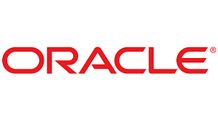Report: The Future of Healthcare
Sector: Healthcare
Publication Date: 2020
Andrew Thompson, CEO of Proteus Digital Health
Proteus Medical Health has invented the world’s first digital pill, with a view to surmounting the problem of patients failing to take medicines as prescribed. Andrew Thompson explains how the collection, analysis and application of data will be central to the new health economy.
To what extent is digital disruption impacting the life sciences and healthcare industries today?
We are at the beginning of one of the most important changes in human society for at least a century. If you try to think of an analogue for what the mobile internet is creating in terms of social, economic and political disruption, you have to go right back to the invention of electricity which constituted the arrival of a completely new kind of utility. Today, the advent of the Internet of Things (IoT) is facilitating a radical shift from models in the 20th century that were based around buildings, people, products and professionals into contemporary models grounded upon software, services, mobile devices and consumers. This is potentially transformational for many industries including the life sciences sector.
Today, in America and the advanced economies of Western Europe, we can’t truly say we have a healthcare system. Instead, we have a ‘sick-care’ system that was assembled in the 20th century with the very best tools that we had in that era. The ‘Sick care’ that we are all familiar with, is based on buildings where you plug into electricity, professionals with knowledge in their heads and products that are designed to be safe in everybody and work in somebody, though we’re not exactly sure who. This is because mass standardisation was one of the flagship achievements of the industrialised era, and this has yielded standardised approaches to healthcare. This approach worked pretty well with what the structures were designed to do, which essentially was to deal with trauma and acute disease.
Why is such an arrangement no longer fit-for-purpose in the contemporary climate of epidemiological transition?
In the 21st century, we face a very different array of healthcare challenges such as chronic conditions that people have to handle in ambulatory settings. To deal with these challenges properly, we need to design a healthcare system that is based upon the best technologies that we now have available to us. A building where you plug into electricity can be augmented massively by a mobile device that connects to the Internet, and the capacity of people with knowledge in their heads can be dramatically extended by software and intelligence via servers in the cloud. Moreover, products that were designed to be safe in everybody can become services that are tailored to individuals and administered where those people live, work, play and pray. They can be delivered in ways that patients can see, measure and understand using the mobile phone that is in everyone’s pocket and can be priced in a way that everyone can afford to access them.
To adapt to the current century, healthcare must be more about access to care and delivery of value at price points that are affordable to everyone everywhere. Those are very much the themes that underpin our innovations at Proteus Digital Health.
What is Proteus’ logic behind turning oral pharmaceuticals into digital devices?
The single most common way a patient with a health problem manages their condition is with their daily pill. If you turn oral pharmaceuticals into digital objects, so that when you swallow them they share information with your phone about what you swallowed and how your body is responding, then you will, as a patient, start to engage with your care on a new level. We are opening the door to a world where patients can have data about how their medication is working for their body, and simultaneously their doctor will be able to understand how the patient is using his or her medicines. Practitioners will be informed as to the extent that a treatment plan is or is not working, and crucially the physician will be able to differentiate whether it is an adherence, dose, drug or timing problem. In short, the creation of the ‘digital medicines’ heralds the dawn of an era where drugs can work in the real world, and not just in the settings of clinical studies.
So this is, in essence, empowering the patient?
Absolutely. ‘Digital medicines’ are for the patient first and foremost. The solution allows them to properly engage with their care. It provides feedback and behavioural cues that support appropriate use of drugs. Secondly patients can share this information with their informal care group, such as their family, who in many cases undertake more caregiving than the professional health care providers, so it empowers those informal carers as well.
Let’s not forget that it is parents caring for children and children caring for parents who are often most responsible for keeping patients out of the hospitals, but who rarely have any real tools at their disposal. If we start to share those tools, we can empower these care groups as they set about caring for their loved ones and, in doing so, support improved health outcomes.
At the same time, digital medicines can enable formal care teams with actionable data insights – for example, who out of their panel of patients is using or not using medicines, getting exercise, not getting rest? This can start a transition in how we allocate our scarce professional resources so that instead of it being about time (seeing the patients every month) it can be about risk (seeing those who are not doing well).
So there are three layers of new opportunity: patent engagement; family empowerment and professional care team enablement all driven by the data sets created by the life flow of a patient.
So data flows will be the lifeblood of a new leaner, meaner, more rationalised healthcare paradigm?
The collection, analysis and thoughtful application of data will be central to the new health economy. It won’t be leaner and meaner. It will be more efficient and more generous as a result. However, it is essential to understand how to deploy data to maximum effect. Unfortunately, when most people talk about data in healthcare these days they are analysing money flow (claims data) and work flow (doctor data), which I personally feel risks missing the point. What we really need to be analysing is life flow. To use an analogy from the automotive industry, what is interesting is the data that comes from the car as opposed to the data that comes from the mechanic in the garage or the insurance company. The most valuable health information is the data that describes an individual patient’s life flow in real time.
How is Proteus Digital Health going about trying to change the status quo and usher in the new vision of future healthcare that you have just described?
Our company is the only one in the world to integrate ingestible, wearable, mobile, and cloud computing. We feel that this aligns with other paradigm shifts taking place across all manner of industry sectors these days whereby old models are being profoundly disrupted by the confluence of connected devices, machine learning and cloud computing. Huge amounts of value in the digital era have been created by taking libraries that were analogue and making them digital with the effect that they become much more personal, tailored and accessible. We've already witnessed the rise of iTunes for music, Netflix for film and eBooks for reading material. The logical next step for health data is ‘DigiMeds.’ What we are doing is entirely consistent with the current flow of socio-economic change.
Part of what you do if you’re a healthcare entrepreneur is you listen to the science and try and figure out where the gaps are. I, personally, was struck by the fact that there was very little consensus about how you most appropriately use medications to get to good patient outcomes, and that it was very hard to tell what drugs patients were using. If you pose the question ‘What is one of the most common things that somebody who’s sick is supposed to do every day?,’ the answer is take their daily pill. What we are doing at Proteus is turning that moment into a digital event where information about what the patient swallowed and how the patient’s body is responding is almost immediately on their mobile phone, and by extension, if the patient chooses, on other people’s mobile phones. Transformation in digital categories occurs based on high value, high frequency, low-friction transactions that transport consumers from the physical to the digital space. We are finding ways to apply that mechanism to healthcare management.
Can you please explain the science behind DigiMeds? How does the technology actually work?
A digital medicine is fitted with a tiny ingestible sensor the size of a grain of sand made of silicon, copper and magnesium. An electrical signal is activated when the sensor comes into contact with stomach fluid — the sensor then passes through the body naturally. A patch the patient wears on their torso receives the signal minutes after the pill is ingested. The patch, which must be replaced every seven days, then sends data such as the time the pill was taken and the dosage to a smartphone app over Bluetooth. The patient’s doctor and other people chosen by the patient, including family members, can access the information. The patient can revoke access at any time.
The underlying principles are that the ingestible sensor is perfectly safe as it is made from naturally occurring ingredients in your diet. It is also fool proof in that it turns on when you swallow it, so you can’t pretend you’ve swallowed it by putting it in a cup of tea. Moreover, it communicates through your body in a conductive mode, so there is no radio signal and nothing gets outside of your body. This is why you have to have the patch on you to detect and decode the signal from the microscopic sensor. This mechanism is highly precise in that it identifies the drug down to the individual pill. If you took three or four of the same kind of pill, then we would identify all four.
And what sort of added value have your digital pills exhibited so far in terms of improving end health outcomes for patients?
Proteus has conducted many different implementations and recently published a study looking at patients being treated for Hepatitis C who were considered high risk for non-adherence. In the US, patients are frequently diagnosed with and get prescriptions for Hepatitis C medications, but a large proportion of those patients are not gaining access to the drug on the basis that they are too risky because the drug is quite expensive at USD 25,000 to 40,000 each per course of therapy, and if you don’t take them correctly, you won’t get cured.
In our study, we specifically engaged those who are most often denied treatment including the mentally ill, drug addicted patients, homeless, or those without access to transportation or on very low incomes. Working with 18 health centres around the US and 288 patients, none of whom would have gained access to the treatment without our supporting technology, we attained a cure rate of 99%.
The results were thoroughly overwhelming. We demonstrated that so long as you can give a consumer access to a digital medicine, then pretty much everyone can attain good levels of treatment compliance irrespective of their social determinants. One of the problems with the healthcare system today is it judges and assigns people in ways that can be cruel. Proteus consistently demonstrates that if you take people who are failing drug therapy and give them digital medicines, then over 90% will succeed in adherence.
Digital medicines have also been used extensively in patients with cancer, cardiovascular disease, hypertension and diabetes populations, and it is proving to be highly consistent in terms of outcomes. If failure to use medicines appropriately is a universal problem, which is a combination of consumers not having the understanding and training to do it well and doctors not having the data to identify the problem, then we have a universal solution which is to leverage the mobile phone in a patient’s pocket and produce the data that the patient, family and care team need to create precise, measured therapy.
Just how much of a societal problem is low adherence?
Non-adherence to medical therapy is not a localised problem. It’s one that’s true across all demographics, countries, cultures, ages, and people. It’s a universal problem. And if you have a universal problem, then potentially Proteus has a universal solution.
In general, drugs are used in accordance with their prescription less than 50% of the time. This is not a defective patient problem. It is a defective product and service problem. We are asking patients to be their own nurse for which they have no training, no recognition, no rewards, no behavioural cues and they fail. The result of that is spiralling costs that exceed $500 billion a year in the USA, mainly excess medical expenses.
Over 16% of total US health expenditure is wasted every year because people are not able to use medicines properly. Proteus has demonstrated in over 100 clinical trials that when we give patients a digital product that gives measurement, feedback and a behavioural cue, we secure adherence rates of 85%-95% and a big increase in success rates of the drug therapy.
We also understand that the digital medicine solution reports a patient’s overall well-being and that this helps the physician concentrate on those most at risk. Is that correct?
The patch the patients wear on their bodies measures a patient’s physiology, so we know something about their heart rate, sleep, and activity. This gets blue-toothed over to their phone and, once the relevant permissions have been granted, relayed to the care team as well. If you are the care team you have a portal that allows you to see all your patients and run AI on top of that panel to determine not only who took their medicines and who didn't get up, but also who is most at risk and why.
To provide you with a concrete example, one diabetic patient we encountered was out of control at the end of every month with regard to her blood sugar levels, and the doctors couldn’t figure out why and were considering changing her medications. We placed her on DigiMeds to see what she was doing with the drugs she was on, and she was coming out as perfectly adherent to the prescription. Every month, the pattern was the same, and it would be the 4th week when the sugar levels went awry. On closer examination, we discovered her sugar levels were up during the same week that she ran out of food stamps. Rather than placing her on very expensive medications, she and the doctor discussed new ways to keep her diet more regular. The power of this information to transform health access and health outcomes is significant.
How is the pharmaceuticals industry responding to the advent of DigiMeds?
We are creating a new paradigm for pharma. Development productivity in the industry has been halving every nine years for five decades, and new drugs now cost billions of dollars each. The platform that has transformed R&D productivity in many other industries is called silicon and software. Proteus is making them an integral part of the drug to realise therapeutic potential that has already been created. We are 100 years into chemistry, 40 years into biology and about 2 years into physics as a source of novelty for new drugs. We think the combination of these disciplines can be a major boost to development productivity.
The risk is that pharmaceutical companies will see it as an additional cost without seeing the benefit. The pharma industry is doing incredibly well with last century’s business model, which is to create new therapeutic products that are branded and patented and sold for high prices. Given that model still seems to work, their interest in novel innovation pathways that divert them from their interest in chemistry and biology is not yet that high. This is to be expected, especially when a massive industry is still highly profitable. E-books is not Barnes & Noble, iTunes is not Sony, and Netflix is not Disney. None of the incumbents in any of those industries were receptive at first. They had to see the new business model and experience financial pressure before beginning to adopt the new paradigm.
Eventually the traditional industry might come around because they will see a roadmap that leads to further profits and avoids loss of market share. In streaming videos, Disney has belatedly been compelled to enter the fray because Netflix took their generic content and built the relationship with consumers to the extent that nowadays Netflix is integrating backwards and creating novel content of its own. Pharma is focused on a model of creating expensive medicines for rich people in the rich world. One has to be realistic about the initial appetite of the industry to embrace change. The early commercial success will no doubt have to be achieved by Proteus and other disruptive non-traditional partners.

 Related Content
Related Content
The Advent of Value-Based Care Models
Medtronic is committed to working with the health community to better leverage technologies and services that improve patient outcomes, integrate care delivery and support the global shift toward value-based healthcare, says Rob ten Hoedt, Medtronic’s Executive Vice President.
Going Digital: Advancing the Future of Health
GE Healthcare has developed NASA-style command centres for hospitals allowing them to monitor critical data in real time to ensure efficient patient care. Kieran Murphy, Global CEO of GE Healthcare, talks about the benefits of artificial intelligence while sharing his vision of the digital healthcare transformation.
Drone Delivery Solves Last Mile Medical Challenge
Zipline, a drone operator specialising in delivery of medical supplies
Addressing the Global Antibiotics Crisis
The global burden of infections resistant to existing antimicrobial medicines is growing at an alarming pace while major pharmaceutical companies are backing away from developing new antibiotics. We spoke with Marc Lemonnier of Antabio, one of only a handful of private firms dedicated to new antibiotics R&D.
Report Sponsors




























